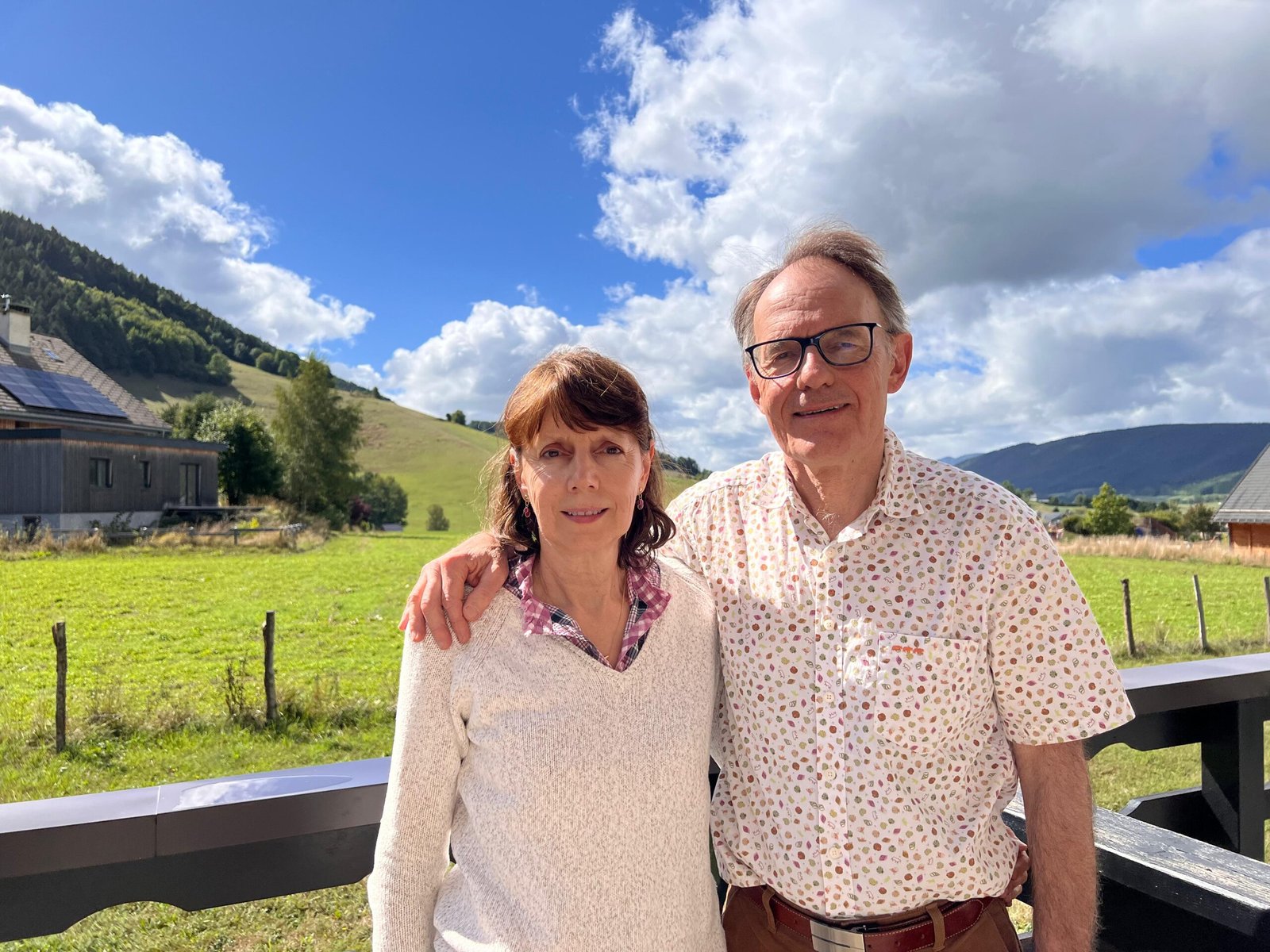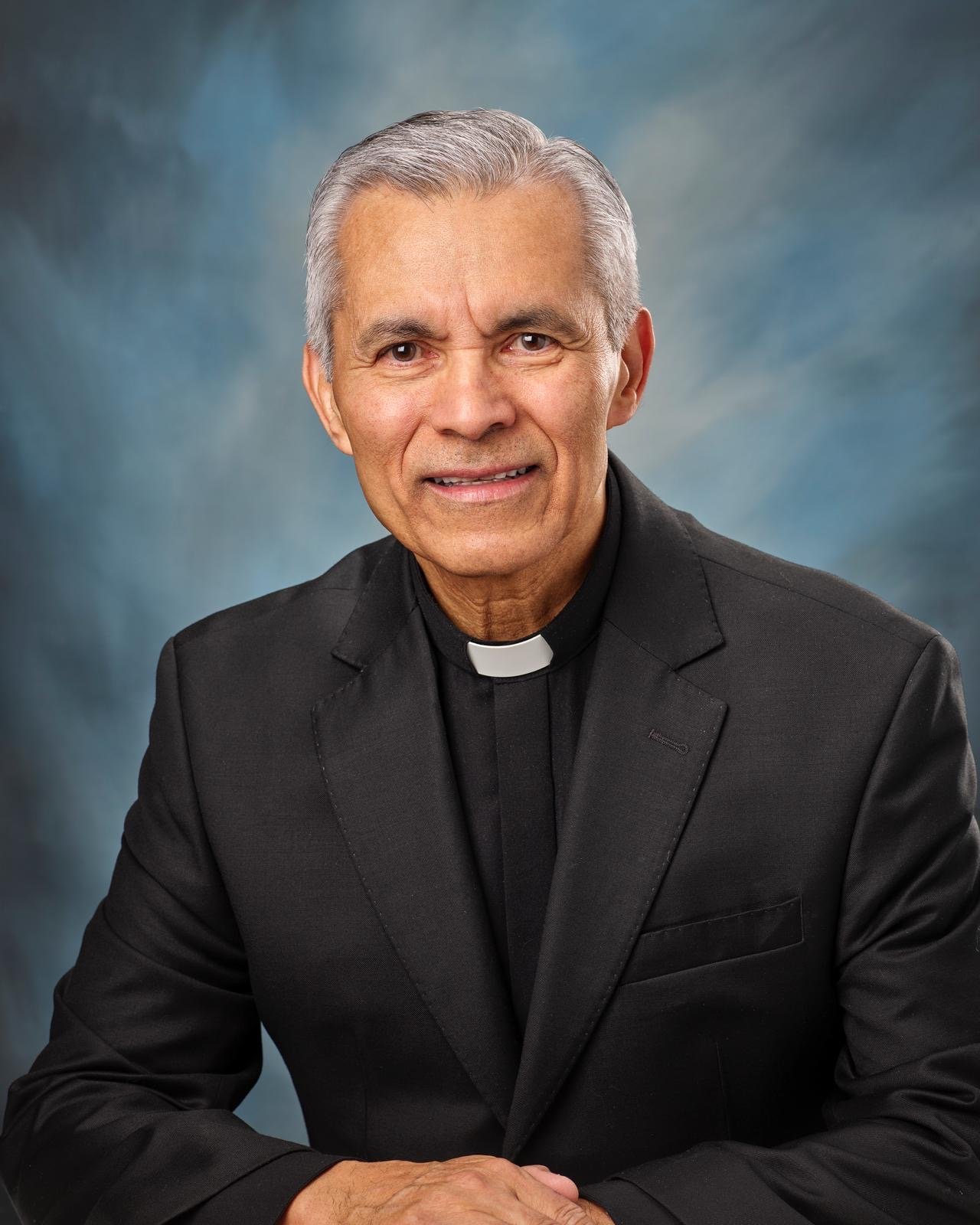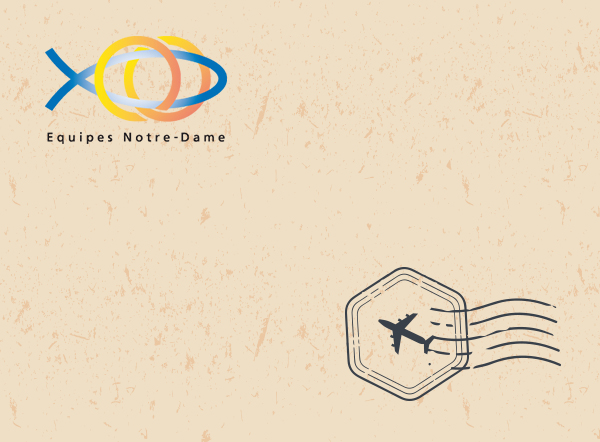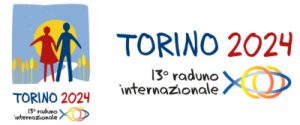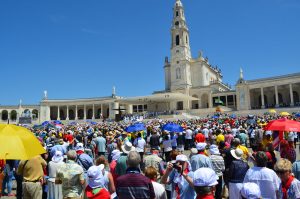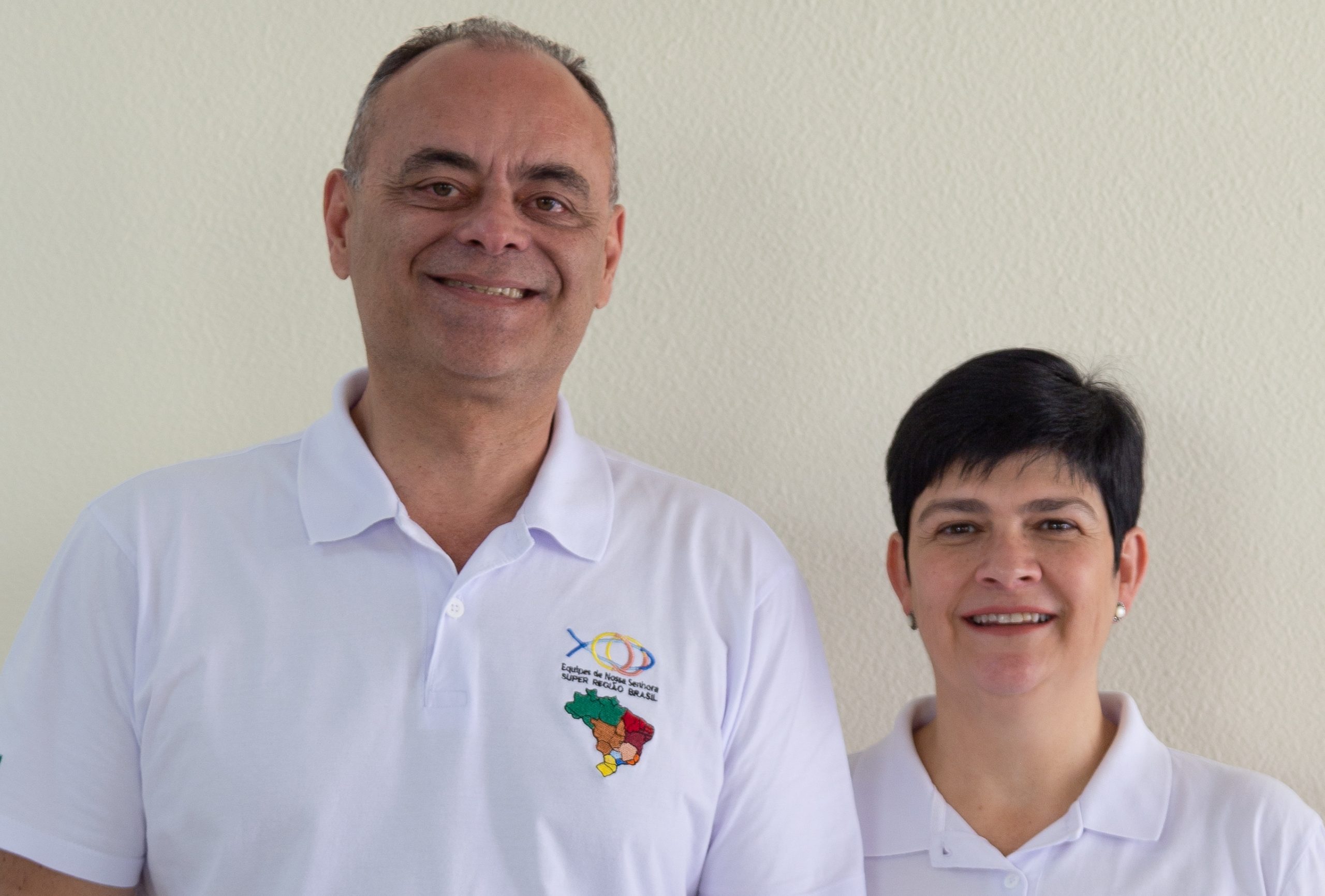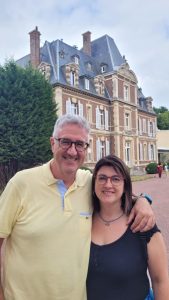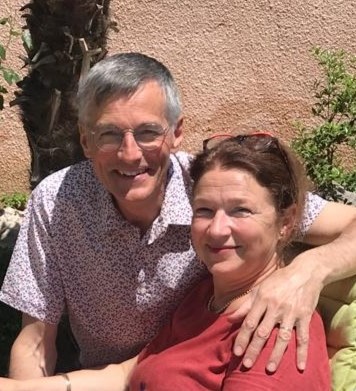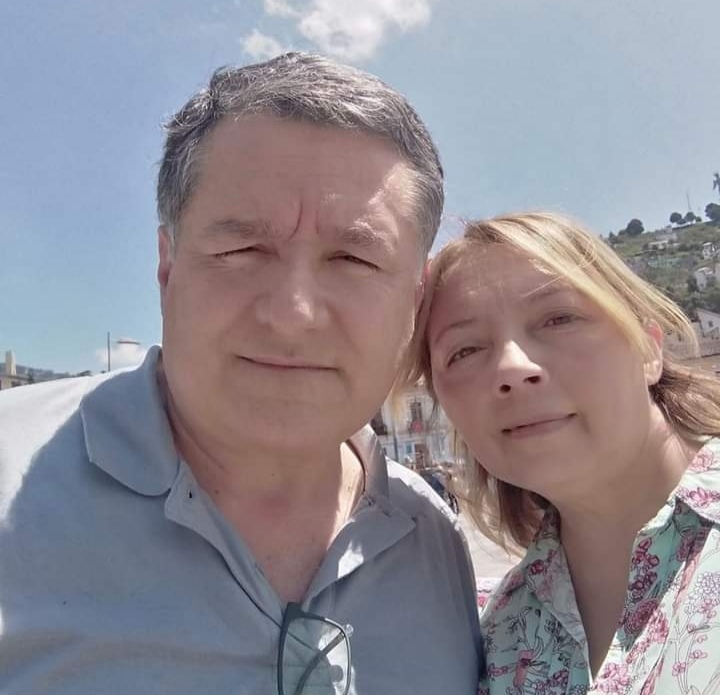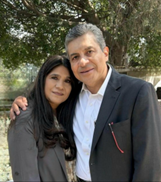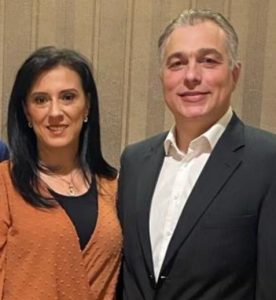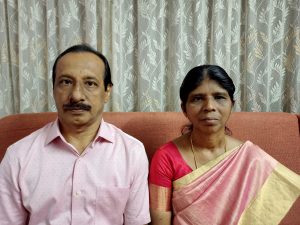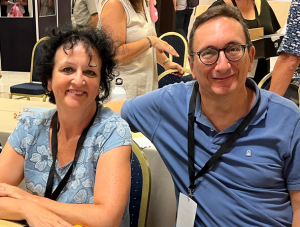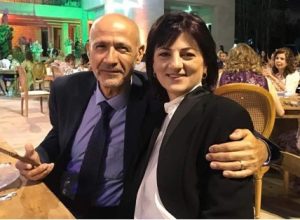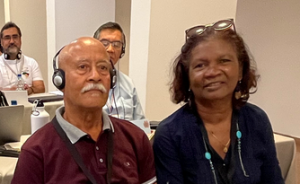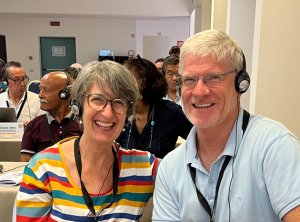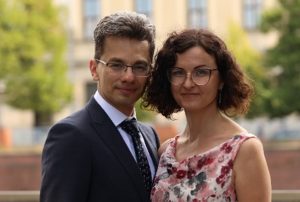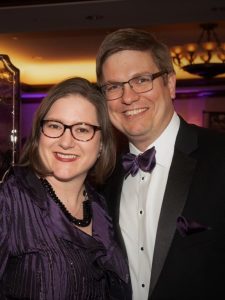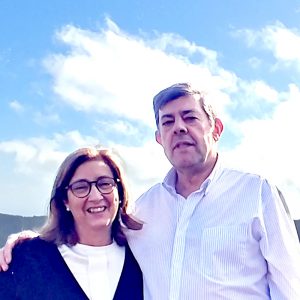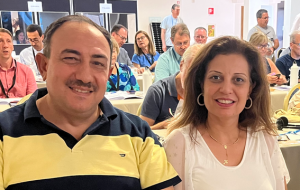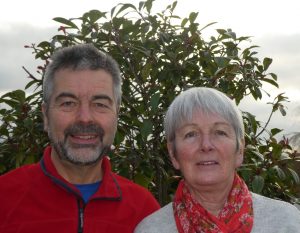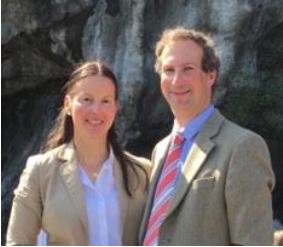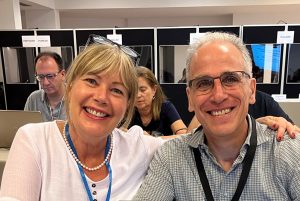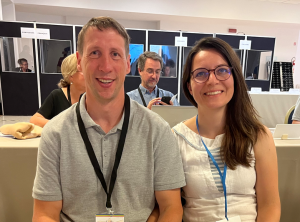Our faith journey in the Teams of Our Lady: 37 years of commitment and service – Catherine and Christophe Bernard, International Secretaries of the Teams of Our Lady
We are Catherine and Christophe Bernard, and we first met in 1978, when we were 18 and 19 years old, in a small hamlet in the Alps—a historic center of French and European mountaineering. This village, the cradle of Catherine’s maternal family of renowned guides and climbers, is La Bérarde. On June 21, 2024, La Bérarde was erased from the map after the rupture of a sub-glacial lake.
The family’s hotel-restaurant—especially its little café where Catherine worked during the summers, and where we first met—was destroyed, along with the chapel beside it where her parents were married. The small family chalet was swept away completely by the torrent. Catherine’s family remains in shock, having lost everything, with rebuilding forbidden.
Our very first shared memories, once filled with life and promise, now carry the deep wound of this tragic loss.
Our journey as a couple has been guided by powerful events and unforgettable encounters.
After this meeting in the summer of 1978 and the exchange of our postal addresses, Christophe wrote a letter to Catherine. A long correspondence of several years followed which truly allowed us to get to know each other better. After seeing each other a few times on weekends or during holidays in the South where Catherine lived or studied, Catherine decided to move to Paris.
Christophe’s godmother then advised us to meet an old priest well known to her. These few interviews with him were both delightful and determining for the evolution of our faith. Here are, from memory, the two sentences that marked us for life: “Man would be the most deceived of animals if he were conscious all his life that with death everything was finished. Whereas in Jesus Christ death is only a stage since we are all called to resurrection and eternal life“. This changes everything. Second sentence: “only God is great enough to satisfy all of Man’s needs, to fill him with total happiness. The spouse, whoever they may be, cannot do so without God.”
These encounters convinced us to resume religious practice and we were fortunate to meet a priest and a group of young people who gave us both the taste to go to mass every Sunday, participate in a prayer group and then, once married, participate in a group of households, who became our most faithful friends.
After four years of marriage -we now have been married 41 years – just before moving, a priest directed us toward the Teams of Our Lady. The prospect of joining a structured movement pleased us greatly because we had become aware that a simple parish movement quickly reached its limits in terms of theme proposals, team constitution, variety of encounters, services to ensure…
We entered the piloting period of Teams in the autumn of 1988, four years after our marriage. The following summer, in 1989, we moved to Nancy, in Lorraine, about 300 km east of Paris. There we quickly became part of the Nancy 31 Team, where we had the great joy of journeying for 27 years with the same spiritual counselor.
Our first two children, boys, were born in Paris, the following two, girl and boy, in Nancy.
Emmanuel and Géraldine, married for 10 years, have 3 children and live in Lyon, just like Elise, our daughter, and Grégoire married for 7 years, also 3 children. We are happy that they are assiduous in religious practice and that their children are baptized, and we often give thanks for this.
Gabriel is going to marry Yasmine, civilly in December 2025 and religiously in May 2026.
As for our son Pierre, he was ordained priest four years ago, within the Saint-Martin Community. He has just joined a Team and thinks we should all pray for priestly vocations during our team meetings! To welcome this vocation announced on the path to Santiago de Compostela, we were greatly helped by our spiritual accompaniers, two Clarisse religious sisters from the Branch of Sion 30 kilometers from Nancy.
We were quickly called to serve in Teams, and in 2012 we were invited to join the France–Luxembourg–Switzerland Responsible Team of Teams. This role meant caring for 20,000 team members and gathering one weekend each month. At that point, we felt the deep need for enduring personal spiritual accompaniment. This guidance allowed us to experience the marvelous complementarity of vocations and states of life (consecrated life/sacrament of marriage and celibacy/conjugal life).
As for our service within the International Responsible Team, we are both secretary and treasurer.
For legal reasons, the role of treasurer can only be held by one person, not a couple. Given his profession as a certified public accountant and auditor, Christophe serves as treasurer. He is responsible for the accounts and finances of both the Teams International Association and the Association of Friends of Father Caffarel, assisted by a certified public accountant. His responsibilities include establishing budgets, preparing accounts and financial reports, and implementing procedures to secure assets and manage expenditures. He also handles payments, fund requests to the Super Regions (SR) and Attached Regions (RR), and follow-up reminders. In addition, he oversees solidarity budgets for the SR and RR, reviews payroll for our two employees (a secretary and a part-time employee responsible for cleaning), and ensures their salaries are paid. He also manages the legal secretariat and ensures that bank assets are placed securely with modest returns.
The role of secretary is more easily shared, and Catherine contributes extensively, particularly with statistics, organization of ERI and College meetings, drafting minutes, and managing logistics. We work in close collaboration with our salaried secretary, Cécile, herself a team member, who puts a great deal of heart into her work—something we and many others greatly appreciate. Christophe works with her on accounting matters, and Catherine on secretarial ones, so we are in daily contact.
As members of the ERI, and drawing on our experiences—particularly Catherine’s work as a conjugal and family counselor—we have devoted much of this year to reflecting on the annual theme proposed by Mercedes and Alberto: “Love is much more than love.” We warmly recommend it to you.
You know everything about us… We are only humble servants… but we would be even less than that without the Lord who truly accompanies us every day of our life… and makes us rise up and grow in unsuspected ways…
The Spiritual Counsellor in Teams of our Lady, a question
One of the fundamental characteristics that identifies and expresses the unity of the Teams of Our Lady Movement in all regions is the accompaniment of priests – Spiritual Counsellors – or Spiritual Companions in each team. Couples appreciate and are grateful for their presence, and some even consider it a privilege given the growing shortage of priests in some regions. But we must ask whether everyone understands why their presence is essential in the team. For some, it may be simply functional, important because of their training and studies, but not necessary given the difficulty of inviting a priest. This latter situation in today’s culture may tempt us to reason in a functional way. That is, as if the only way forward is to give an answer based solely on human effectiveness, which, consciously or not, reduces the Movement to a sociological institution and hides from us the life-giving presence of the charism and gifts granted by the Holy Spirit.
That is why I think it is worth remembering that, throughout its history, from the first meetings in 1939 and in the Movement’s essential documents, the reference to the priest has been a fundamental characteristic of the Teams. The Charter (1949) states that: “Each team must secure the help of a priest.” The ERI document concerning The Priest Spiritual Counsellor (1993) also states: “The Movement has always sought priests to be counsellors to teams. This is a well-established tradition and a very strong commitment.” The Guide to Teams of Our Lady of 2001, while noting the difficulty teams have in finding priest spiritual counsellors, reconfirms this desire when it states: “Each team must obtain the help of a priest…”. And finally, the Canonical Statutes of Teams of Our Lady (2002), revised in 2014, refer to these by saying: “Composed of 5 to 7 couples, (the team) is assisted by a priest” A Spiritual Counsellor”.
The Movement’s argument of “tradition and a very strong commitment” in maintaining the presence of the priest as a fundamental feature is clearly very valid. However, reading the document “The Priest Counsellor and the Spiritual Accompaniment in Teams of Our Lady” from the ERI (2017), I would like to insist and invite you to reflect that this argument of tradition is based on the ecclesial reality experienced in each team of the mutual enrichment of the sacraments of holy orders and marriage. Both sacraments complement each other to give life to the Church. In both cases, it is a covenant. This was Father Caffarel’s intuition when, during the team’s prayer, one of the women said to God: “Lord, we thank you for the marriage of our two sacraments: priesthood and marriage.” Faced with this, Fr. Caffarel, in his intuition as a founder enlightened by the Holy Spirit, did not doubt its depth and concluded with his own reflection: “I think this is a very deep insight and is part of this initial dynamism, the covenant between the priesthood… which represents the Church… and couples… who bring their riches…” (The Foundational Charism – 1987). Herein lies the spiritual and theological source that makes the presence of the Spiritual Counsellor an essential feature of the charism of the Teams of Our Lady.
In the theology of the sacraments in recent decades, mainly since the pontificate of St. John Paul II, there has been reflection on the relationship between the sacrament of marriage and the other sacraments, particularly the sacrament of holy orders. Therefore, with the aim of deepening our theological understanding of the institutional structure of the Movement, I would like us to read together what Cardinal Marc Ouellet writes. Based on the current principle that “the entire sacramental structure of the Church expresses the joint fruitfulness of Christ the Bridegroom and the Church the Bride,” he emphasizes the profound relationship of grace that exists between these two sacraments. Cardinal Ouellet writes:
The marriage and the priesthood meet in the objectivity of the sacramental life as the two dimensions – the horizontal and the vertical, respectively – of the covenant. The priest serves as minister for the vertical gift that descends from God to fructify the spouses’ covenant by means of Christ’s love for the Church. Thanks to the priest’s Eucharistic ministry, the spouses can offer themselves to the Father in and with Christ, who gathers and enfolds them in his spousal love for the Church. The priest represents the gift of the Bridegroom both personally and sacramentally, whereas consecrated virginity and indissoluble marriage incarnate the Church-Bride’s response to this gift. Thus connected by means of the priestly ministry, marriage and virginity sustain and confirm each other as the two paths of holiness that they are. In both cases, the total gift and offering of oneself, body and soul, in response to the love of Christ the Bridegroom creates a genuine ecclesial ‘state of life’ founded on a definitive supernatural bond.
Moreover, marriage and the ministerial priesthood meet and correspond in the objective, sacramental communication of the trinitarian life. The sacrament of marriage expresses the reciprocal fruitfulness of the divine Persons who are present in the couple created in God’s image and likeness; the sacrament of holy orders, on the other hand, gives particular expression to the gift, in Christ, of the Father, who is the origin of the entire mystery of communion in the order of nature as in the order of grace… In representing Christ, the Head and Bridegroom, then, the episcopal and presbyteral ministry supplies the nourishment of the Word and the Bread of life that ultimately descends from the Father.
Christ has also provided a specific help for a human love affected and wounded by sin and its consequences: concupiscence, egoism, and division. Through absolution, Christ extends to the spouses the grace of repentance and reconciliation, thus renewing both the grace of their baptism and its concretization in conjugal life. (M. Ouellet, Mystery and sacrament of Love: a theology of marriage and the family for the new evangelization, 2015, pg. 171-172)
In conclusion, what a beautiful liturgy we would celebrate if we participated in our Team meetings—priests or spiritual companions and married couples—with a more attentive awareness of the abundance of sacramental grace which, as Cardinal Ouellett says, is communicated in the communion of Trinitarian life between marriage and priest. Please, let us not forget to pray for priestly vocations and for marriage.
Edmonton, September 2nd, 2025
Fr. Augusto Garcia PSS
